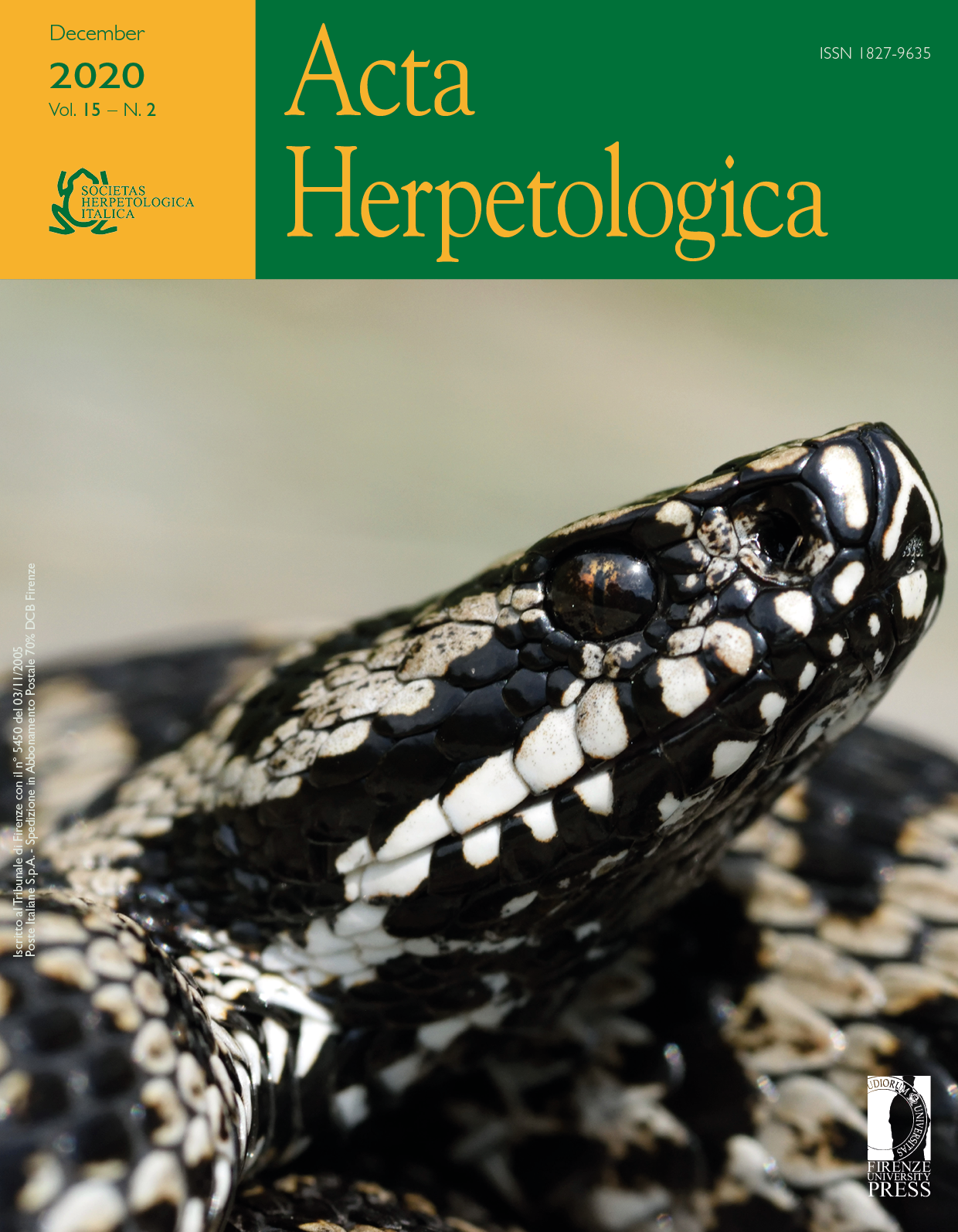Food composition of a breeding population of the endemic Anatolia newt, Neurergus strauchii (Steindachner, 1887) (Caudata: Salamandridae), from Bingöl, Eastern Turkey
Published 2020-12-08
Keywords
- Ecology,
- diet,
- trophic niche,
- dipterans,
- amphipods
- oophagy ...More
How to Cite
Abstract
The study presents data on the food composition of a breeding population of the Anatolia newt Neurergus strauchii (Steindachner, 1887), from Bingöl, Turkey. A total of 953 prey items were determined in the food contents of 46 individuals (18 males and 28 females) examined in the study. Insecta (63%) and Malacostraca (35%) constitute 97% of the food composition by number. While the most frequently encountered prey groups in the diet are Diptera (87%), Amphipoda (85%), Neurergus eggs (74%), and Coleoptera (37%), the comparison of food composition by volume is Amphipoda (40%), Neurergus eggs (41%), and Diptera (10%) respectively. No significant difference in food niche was observed between the sexes. The species generally fed on aquatic, poor-flying or slow-moving invertebrates.






